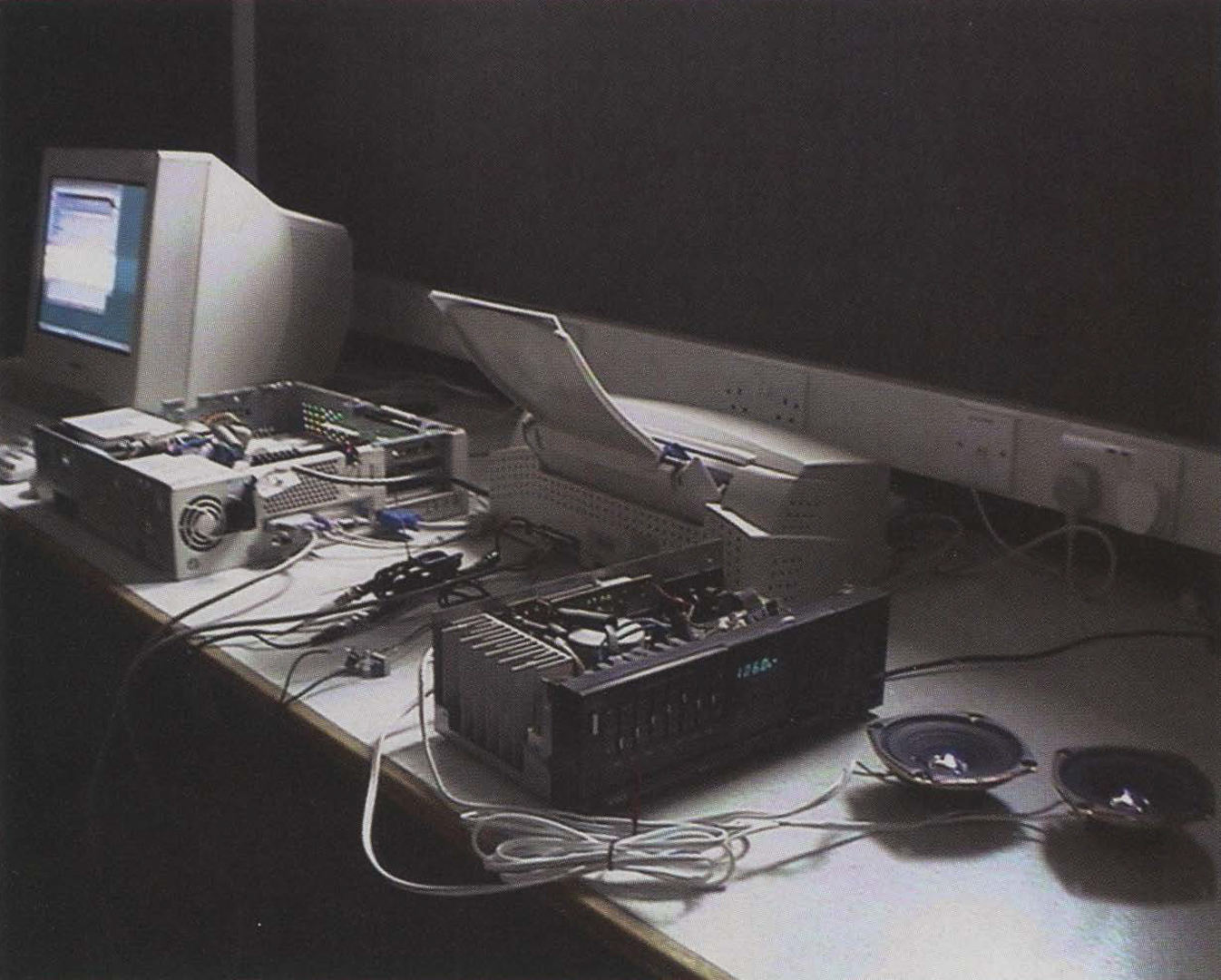Eva Verhoeven: Audio Printer
Artist(s):
Title:
- Audio Printer
Exhibition:
Creation Year:
- 2004
Medium:
- Computer, printer, amplifier, and speakers
Size:
- 90 centimeters x 80 centimeters x 190 centimeters
Category:
Artist Statement:
The project’s main purpose is to explore strategies in the field of media art that enable a critical understanding of the medium that is being used and thus critically reflect upon the computer as a medium. In order to investigate these questions and issues, I explored strategies like instructions, appropriation, and intervention in the everyday that were developed in the context of art by the avantgarde of the 1950s and 1960s, in particular. John Cage’s work on Prepared Piano Music has been of particular interest. In 1940, Cage prepared the strings of a piano with screws. This led not only to alteration of the medium, but also the need to change the visual character and contents of the score. On the level of the programme, or the score and the hardware, or the instrument, Cage appropriated and intervened in the conventional conception of the instrument. I began exploring the hardware itself, trying to find ways to intervene and lay open the structures of the computer as a symbolic system. The installation Audio Printer emerged from this research. Documents that are sent to the printer can be heard as the sounds of the data. The data on the level of the binary system represent the document, and it becomes visible and accessible though its own production of sound. The underlying structures are conceptually made visible or audible.
Technical Information:
Computers work with signs and symbols. In other words, they work with different structures of representation. The computer operates with little bursts of electricity (only about five volts) that correspond to the on-and-off, or zero-and-one, states of the binary system. These electric pulses are, generally speaking, translated into assembly codes and machine languages, which are further translated into sets
of instructions and finally into a language that the user can understand. This representation appears to the user as an operating system and application software. With the aim of exploring these underlying structures, I started to have a look at the parallel port as an output device that is usually
used to connect a printer. The parallel port sends bits of data across eight parallel wires in the form of voltages. To represent a 1 in the binary system, approximately five volts are sent through, and for zero, a nearly zero voltage is transmitted, to signify O in the binary system. The data are loaded and sent through on lines 2 to 9. The next step was to connect an amplifier and speaker to the lines that load the
data. By linking transformers in between the parallel cable and the amplifier, five volts turned out to be efficient to hear the data streams. The information from the document that is sent to the printer, passing through several layers of representation and being translated into several different languages, becomes data sound.





